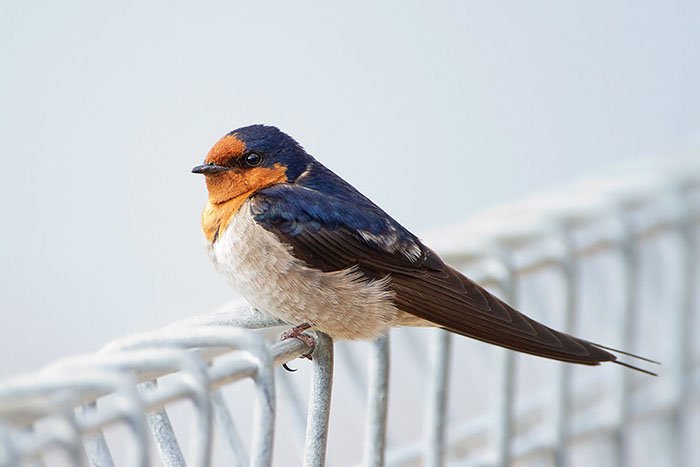This fat little circle builds a nest to die for

Bec Crew
Bec Crew

AND DARE WE SAY A welcome one, too. Each year, these pretty songbirds winter in the northern parts of the country, and migrate south once the warmer months hit. Their age-old role as heralds of spring earned them their sunny moniker, the welcome swallow, but there’s nothing homely about their nests.
Welcome swallows (Hirundo neoxena) are native to Australia and nearby islands such as New Guinea and New Caledonia. They’re also known as a ‘self-introduced’ species of New Zealand, because rather than being introduced by humans (unwittingly or otherwise), they made their own way across the Tasman Sea more than a century ago. Now they’re a fixture throughout New Zealand, thriving in its relatively predator-free surrounds.
In Australia, welcome swallows have a whole lot more to worry about, with snakes, cats, and hawks firmly on their tails. While they can build their cup-shaped nests at heights of up to 13.5 metres above the ground, this doesn’t stop an enterprising snake from climbing up a tree or wall to nab a juicy meal.
But just as there’s no stopping the coming of spring once the welcome swallows arrive, these little birds build their nests with the inevitability of a snake attack in mind – all kinds of horrendous diseases and bacteria await any would-be predator that’s foolish enough to stick its snout inside.
There’s the potentially fatal fungal disease, histoplasmosis, and encephalitis, which can cause an acute infection in the brain. There’s salmonella, meningitis, toxoplasmosis, and even fowlpox, which can harm the welcome swallow itself.
Lucky for the hatchlings, which have no choice but to squirm around in all that filth, evolution appears to have given them a booster shot of white blood cells from their time in the egg.
Scientists have calculated that they have up to four times as many immune-boosting white blood cells as the adults, which is a whole lot better than what Eurasian roller hatchlings have to do to ward off their predators…
If welcome swallow hatchlings survive the snakes and salmonella, and grow old enough to leave the nest, they get to experience this incredibly teenage-looking phase:

(Image Credit: Benjamint444/Wikimedia)
But then they get to be handsome adults like this:

(Image Credit: JJ Harrison/Wikimedia)
Or they can truly confuse things and end up like this incredibly rare leucistic welcome swallow:

(Image Credit: Rabbani/Shutterstock)
I’ll leave you with some footage of a (regularly hued) welcome swallow, looking just like a sweet little robin redbreast:
Except Australia has its own version of that, too.




